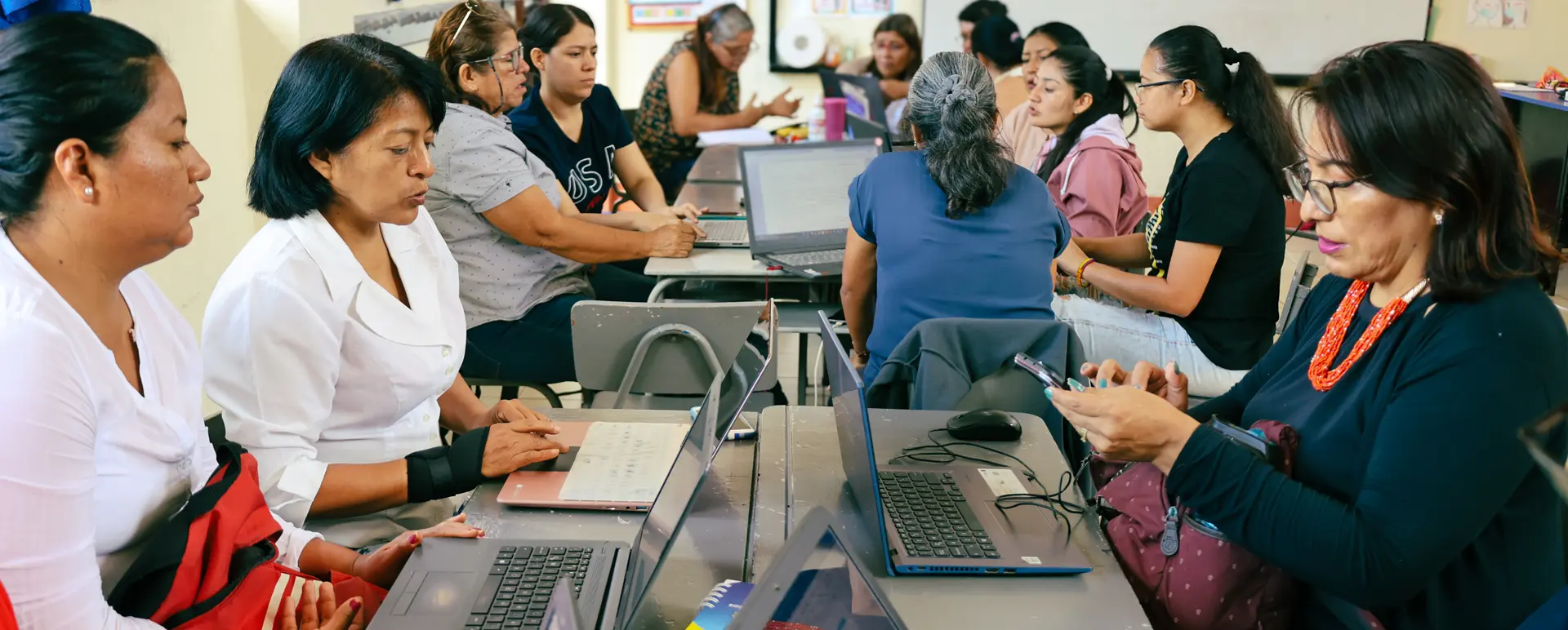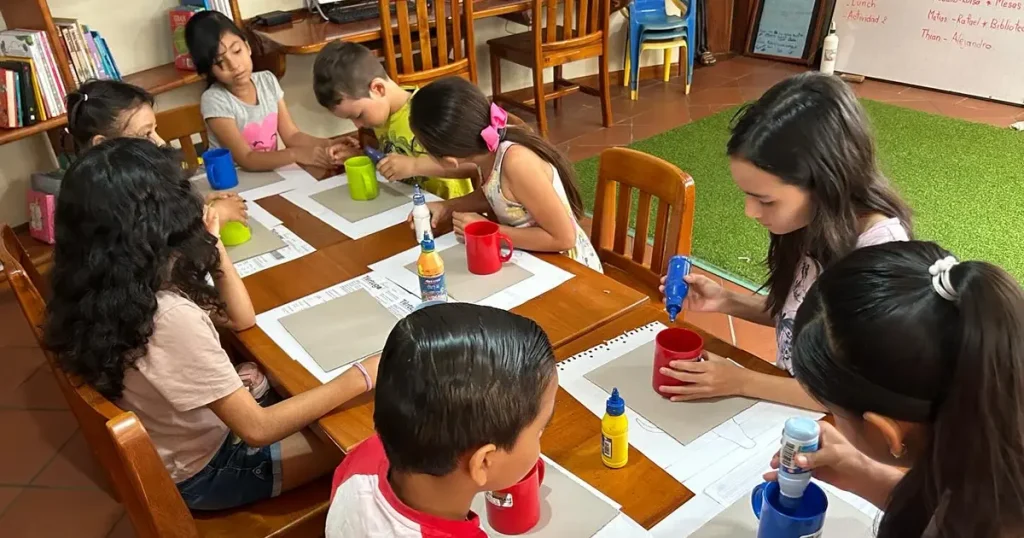A Week That Shapes Generations

In Galápagos, a new generation of children is growing up with a profound sense of care for their surroundings. Thanks to the Teacher Training Institute, every educator in the archipelago now has better tools to integrate sustainability into their lessons, linking education with the islands’ unique environment. This effort is not only transforming classrooms—it is planting in students both a love for their home and the tools to protect it.
When María Eugenia Martínez began teaching in San Cristóbal, she arrived with a notebook full of lessons, but few answers to the question that concerned her most: How do you teach children who live in one of the most beautiful and fragile ecosystems on the planet?
Environmental protection wasn’t part of her curriculum. Resources were scarce. And although she knew her students were growing up in an environment unlike any other on Earth, she wasn’t sure how to help them connect with it. Surrounded by extraordinary biodiversity, she didn’t know how to turn that uncommon access into awareness.
María Eugenia wasn’t alone. For years, teaching sustainability in Galápagos was a neglected challenge. Without adapted content or spaces to share strategies, many teachers tried to connect their students with the environment—but lacking clear guidance. What happened inside the classroom often failed to reflect the realities outside. A generation without that connection wasn’t prepared to care for the islands.
Then, a new idea emerged:
To truly change education, we had to begin with those who teach.

A Transformative Week for Educators
Galápagos faces increasing pressures: unsustainable tourism, pollution, biodiversity loss. If we don’t equip those who teach, we risk raising generations disconnected from the place they call home.
Because understanding leads to care — and education is the path to conservation.
In 2008, Galápagos Conservancy launched the first Teacher Training Institute as a long-term investment in education deeply rooted in environmental principles. It is a space where teachers learn, share, and prepare to teach better. From the outset, the focus was clear: to teach sustainability in a way that is practical, locally grounded, and deeply relevant—aligned with the real challenges of life in the Galápagos Islands.
What began as a few workshops has become one of the most important educational programs in the archipelago. Its goal remains unchanged: to grow the capacity of those who are nurturing the minds of the next generations.

This year marks the Institute’s 16th edition. From April 21 to 25, more than 400 teachers from across the islands will come together for a five-day training experience that goes far beyond the classroom. Activities will include outdoor sessions, new approaches to classroom instruction, and concrete tools for incorporating biodiversity, ecotourism, and community participation—key themes in Galápagos’ contextualized curriculum.
“This is not just another workshop,” says Jenny Macías, Coordinator of the Education for Sustainability Program at Galápagos Conservancy. “It’s an approach that acknowledges that behind every student is a teacher who needs tools, support, and a clear vision to connect their classroom with the challenges of this unique territory. Because if we want a new conscientious generation, we need a way of teaching rooted in the present and looking toward the future.”

A Community That Teaches, Learns, and Acts
This change doesn’t occur in isolation. The Institute mobilizes a team of over 60 people, including facilitators, pedagogical leaders, and local sustainability experts. Partnerships with organizations like Fundación Scalesia, Universidad San Francisco de Quito, and Fundación ECOS have been key to ensuring the quality and relevance of this important program.
For Lourdes Carrión, District Director of Education in Galápagos, a locally driven approach is critical to ensuring this work lasts: “By strengthening the capacity of Galápagos teachers,” she explains, “we are empowering them to continue promoting sustainability-focused education from within the territory. We value and support the participation of local experts and pedagogical leaders, which guarantees the long-term sustainability of the project.”

A Classroom that Stretches to the Horizon
Teachers return to their classrooms with fresh ideas that inspire new ways of learning. Students are learning to observe their surroundings, care for their environment, and take meaningful action. With each classroom initiative, a quiet but powerful transformation is taking place—one that builds steadily, planting the seeds of long-term change.
Share:



